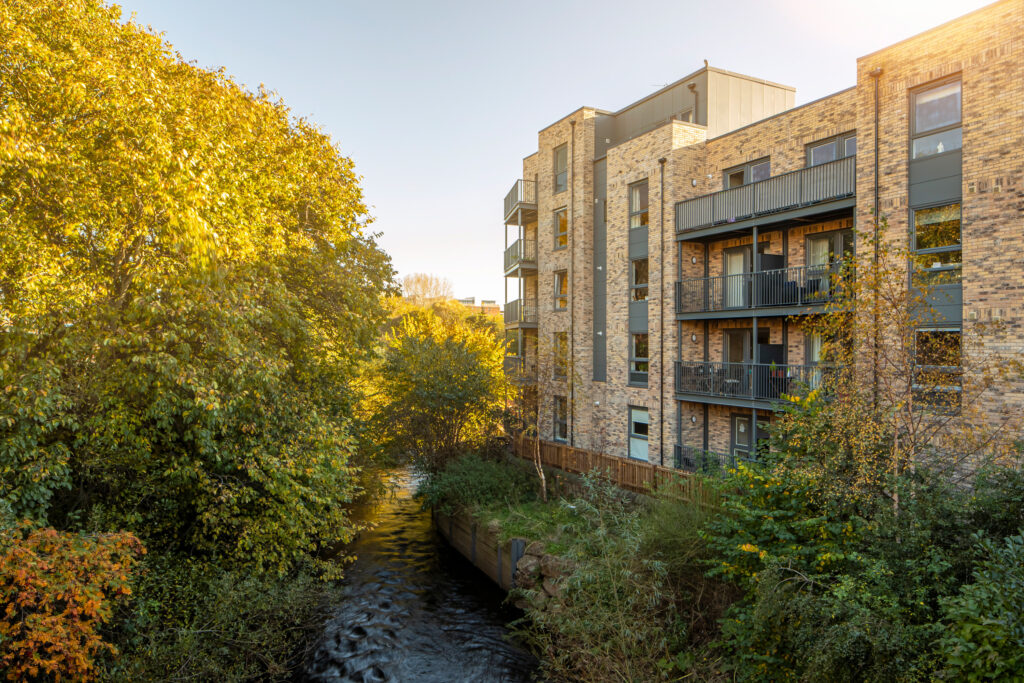Apartment living offers many benefits, from lower costs and higher levels of social interaction to superior views and proximity to local amenities. In this latest article in our Insight series of in-depth analyses of all-things property, Queensberry Properties’ sales and marketing director, Hazel Davies, examines the enduring appeal of this much loved property style.
“For the last 150 years, there have been three dominant styles of residential property in the UK. When the Victorians imported the concept of bungalows from India, these single-storey homes were absorbed into urban and suburban landscapes alongside the houses and flatted dwellings which had previously dominated our skylines.
“In the 20th century, advances in construction techniques saw apartments literally towering above other property styles. The short-lived Brutalism era represented the high point of high-rise living in this country, though many of its system-built towers only lasted a few decades. Yet Scotland’s rich history of tenement flats can trace its origins back through the centuries, reflecting the timeless and enduring benefits of low-rise apartment living”.
Modern studies
“It goes without saying that modern apartments are unrecognisable from the freeform structures in Edinburgh’s Old Town, or pre-war Glasgow’s sooty tenements. Yet in some respects, their Victorian and Georgian heritage is instantly obvious. Four-storey apartment blocks remain ubiquitous, making efficient use of available land while ensuring even third-floor residents can easily access communal grounds or car parking spaces. Most of the apartments at our Bonnington Mill development beside the Water of Leith were constructed within four-storey buildings, for example.
“When architects wish to go higher, they can incorporate lifts and rooftop gardens into their plans. Plans for our recently approved Otago Lane development in the heart of Glasgow’s west end incorporate upper-storey properties with spectacular views across the River Kelvin, towards Hillhead’s elegant blonde sandstone tenements. Here a total of 45 apartments can be constructed within a compact footprint, reflecting the efficiencies which can be achieved by building up rather than across. It’s also possible to expand downwards; our Waverley Square development in central Edinburgh features 66 apartments plus 59 underground car parking spaces, minimising the presence of vehicles at ground level in this historic city centre setting”.
Suburban splendour
“New apartment buildings are usually constructed in urban and inner suburban areas, repurposing brownfield sites and drawing new people into established conurbations. “These districts tend to host shops and cafés, established public transport links and mature parkland. Densely populated areas also tend to have lots of community events and associations based within public hubs like libraries and leisure centres. This gives new residents plentiful opportunities to socialise, exercise and enjoy themselves within established communities.
“Being able to buy a brand-new home within walking distance of public transport and local healthcare provision reduces the car dependence often associated with greenbelt estates. Because apartment developments are often closer to city centres, commuting is quicker, and nightlife is more accessible. It’s also easier to foster community spirit within an apartment block, where residents share stairwells and landscaped communal grounds, as opposed to houses divided by hard boundary fences. People are much more privacy-focused than they were in the tenement’s communal heyday, but a quick chat with a passing neighbour can still lift your spirits to a remarkable extent”.
A model of efficiency
“Apartments are usually cheaper to buy and maintain than houses or bungalows. The developer’s ability to incorporate more than one home within a building’s footprint reduces individual construction (and therefore purchase) costs, leading to lower council tax banding and smaller bills. Shared boundary walls encourage heat to move around rather than escaping externally – upper-storey apartments naturally benefit from the rising heat generated by homes beneath them. Apartment blocks often share facilities that would otherwise be replicated in every home, from drying greens to satellite dishes, further reducing both construction and maintenance costs.
“Simplicity is another common benefit of apartment living. If a development has factored communal grounds, residents can enjoy manicured lawns and shrub borders without being green-fingered or having to cut the grass every weekend. The safety engendered by shared lobbies brings peace of mind when working away or going on holiday, while residents associations further boost security through Neighbourhood Watch schemes and greater communication between neighbours. Above all, there’s less maintenance in a factored block than in a house or bungalow. For time-poor people juggling busy lives, that’s perhaps the most compelling benefit of apartment living…”

